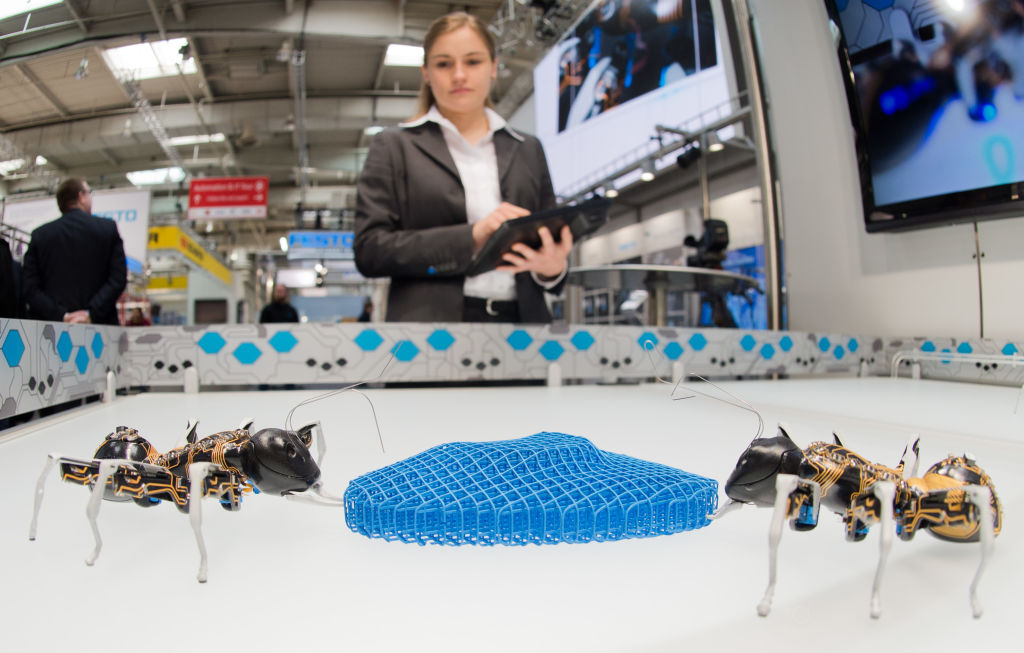As humanity stands on the brink of an era where the mysteries of space beckon us further than ever before, we find ourselves exploring innovative solutions to tackle the challenges of planetary exploration. While massive rovers like NASA’s Perseverance are making strides on Mars, emerging research and development are venturing into a different territory: swarms of autonomous insect-like robots. These small, agile machines could revolutionize space exploration by working in concert to accomplish complex tasks autonomously.
The Rise of Swarm Robotics
At the forefront of this revolutionary approach is a project led by mechanical engineering professor Nhut Ho at California State University Northridge. Ho’s team recently received a substantial grant of $539,000 from the Department of Defense, aimed at advancing the development of these robotic swarms tailored for both extraterrestrial missions and various applications on Earth. This funding is a testament to the growing recognition of swarm robotics as a pivotal technology in modern exploration efforts.
How Swarm Robotics Works
The concept of swarm robotics draws inspiration from nature, where social insects like ants and bees work together in complex ways. Each robot in the swarm operates not just independently but collaboratively, allowing them to tackle large-scale tasks that would otherwise be unmanageable for a single robot. These autonomous units learn to adapt, organize themselves into different groups, and maintain functionality even when faced with the loss of some members.
- Task Delegation: The ability to assign different subunits to various tasks allows swarms to process information and execute functions concurrently.
- Redundancy: If one robot encounters an issue, the remaining units can continue the mission, enhancing operational reliability.
- Exploration Efficiency: Small swarms can cover vast areas quickly, making them particularly effective for mapping and exploration in unknown terrains.
Collaborative Efforts with NASA JPL
The synergy between CSUN and NASA’s Jet Propulsion Laboratory (JPL) marks a significant advancement in this field. Together, they aim to discover optimal strategies for autonomous navigation and mapping of underground environments, which are vital for mission planning on planets with complicated landscapes like Mars.
Applications Beyond Space
The implications of swarm robotics aren’t limited to Mars. These technologies are being engineered for various Earth-based applications, including:
- Mining: Swarms can assist in locating and extracting resources from difficult terrains.
- Industrial Operations: Flexible robot swarms can simplify manufacturing lines and enhance productivity.
- Search and Rescue: During emergencies, autonomous groups can swiftly locate individuals in hazardous environments.
Future Forward
As we look towards a future where robotic swarms may set foot on other planets, it’s essential to recognize the significance of ongoing research in this area. While it may take time before we see insect-like bots on celestial bodies, the foundational work being done today lays the groundwork for groundbreaking explorations in the future.
At fxis.ai, we believe that such advancements are crucial for the future of AI, as they enable more comprehensive and effective solutions. Our team is continually exploring new methodologies to push the envelope in artificial intelligence, ensuring that our clients benefit from the latest technological innovations.
For more insights, updates, or to collaborate on AI development projects, stay connected with fxis.ai.
Conclusion
The dawn of swarming insect robots signifies a thrilling chapter in the story of space exploration. With a fusion of technology, innovative thinking, and collaboration between educational institutions and renowned agencies like NASA, the dream of exploring other worlds through intelligent swarms is not just a fantasy—it’s becoming a reality. As challenges arise and new horizons beckon, these tiny titans hold the promise of advancing our understanding of the universe and expanding the frontiers of human capability.

